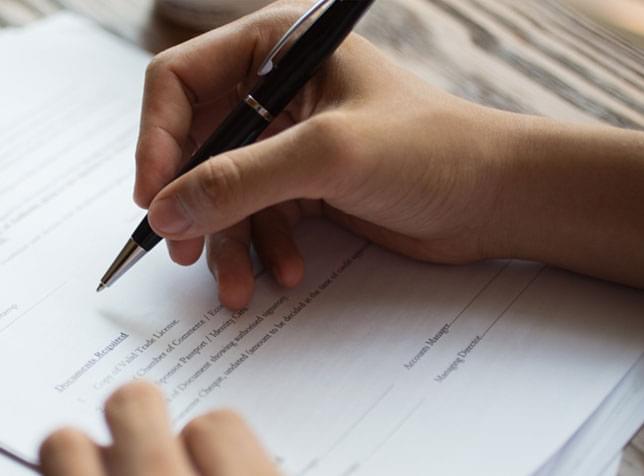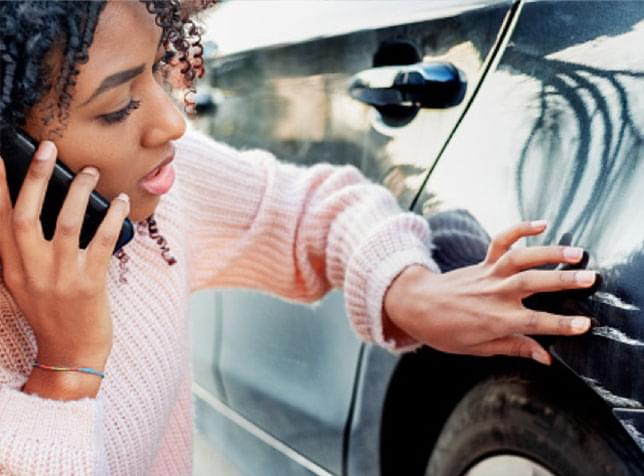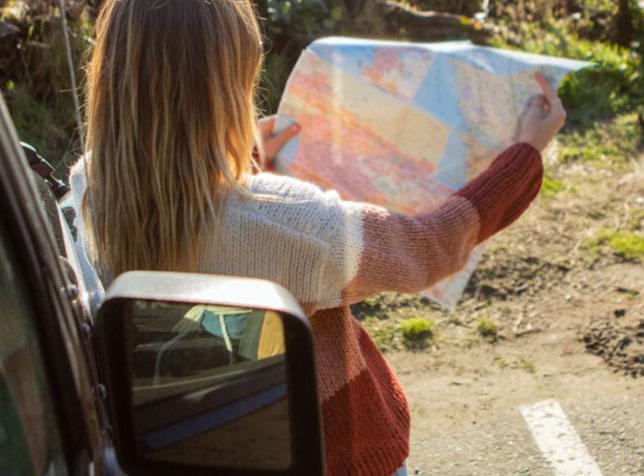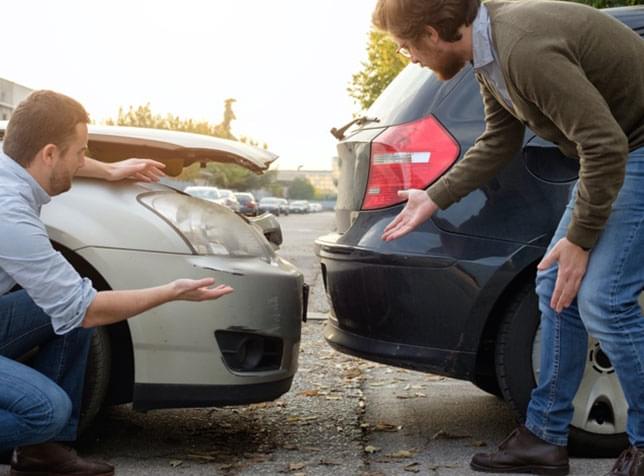

Safe Driver Program
Looking to save on your car insurance?
Instantly save on your car insurance with The General® when you enroll and download the MyDrive™ app to monitor your safe driving habits.
MyDrive is not available in all states.
How MyDrive Works
MyDrive is a voluntary program that is simple and easy to download on your mobile phone.
Step 1
Enroll in MyDrive and get a
policy with The General.
Step 2
Download and activate the
MyDrive app on your phone.
Step 3
Drive safe and start
saving on your policy.
MyDrive Can Help You Save Today
You can save instantly on your car insurance policy by simply enrolling in the program.
Once enrolled, you will receive a welcome text message to download and activate the MyDrive app. After that, just have your mobile phone with you in the vehicle when driving. The app will do the rest!
Get a quote, enroll, download & activate the MyDrive app to start saving!

Frequently Asked Questions
Yes, the app uses some phone data to process and score your trip results. The app uploads about 400-500 kilobytes of data per hour of driving.
IOS Permissions
- Location set to Always; and
- Motion and Fitness set to Enabled; and
- Notifications set to Enabled.
Android Permissions
- Location set to Allow all the time; and
- User Activity Recognition set to Allow; and
- Notifications set to Allow; and
- Post Notifications set to Allow.
The app records data to measure your driving during a trip and identify risky driving events. In addition, we may receive data related to your use of the app to help us improve the app experience. The app collects:
- Location data (incl. from GPS when available)
- Accelerometer data
- Gyroscope data, if available
- Magnetometer data
- Barometer data, if available
- Time
- Your interaction with the phone while you’re driving (for example, whether the phone is in motion or not)
- Important: The app does not record information about which apps are in use or the content of any messages or calls.
- Smartphone settings and status
- Your interactions and engagement with the app’s screens and information
The app uses the phone’s battery to run and has a negligible effect on the battery when you are not driving. When you’re driving, the typical battery drain is only a few percent per hour. This amount varies based on the smartphone model and age.
To check the app’s battery usage:
- Note that each manufacturer may modify the interface so these steps might vary.
- iPhone
- Go to: Settings > Battery > Scroll to find the app.
- Android
- Go to the app’s App Info page > Scroll through the options to find battery usage.
- iPhone
The app collects and analyzes your driving data, then provides an overall driving score out of 100 based on a series of criteria. For each of the criteria below, a specific sub-score is also provided.
- Phone Distraction: Using the phone in your hand while the vehicle is in motion
- Hard Braking: A sudden reduction in speed
- Speeding: Driving over a safe speed for a given road
- Hard Acceleration: A sudden increase in speed
- Cornering: Turning or swerving harshly
Your overall score, out of 100, is presented on the Dashboard screen in the app. This is the key measurement of your driving performance, calculated with data from your trips over the past two weeks. The app compares your performance to the typical driver population for each sub-score, like hard braking or speeding, and then weighs your sub-scores together to produce an overall score. The app uses aggregated data from millions of users and billions of recorded miles to calculate your relative level of risk per mile.
The star ratings are granted for each individual trip and can be viewed on the Trips screen. They provide an idea of what happened on each trip. For a given trip, you can lose stars for any risky events that occur, such as phone use, hard braking, speeding, hard acceleration, and hard cornering.
- >= 100 = 5 stars
- >= 90 = 4 stars
- >= 80 = 3 stars
- >= 70 = 2 stars
- <70 = 1 star
Over time, the app learns your driving behaviors and common routes, allowing it to determine whether you were a driver or a passenger for a given trip. To help the app in this process, we recommend that you review and update your trip classifications for your first ten or fifteen trips so the app learns whether you are a driver or passenger, or in another mode of transportation.
To classify your status, navigate to the Trips screen, tap on a given trip, then tap the Driver icon in the upper right corner. You will see a series of options from which to select the correct mode of transportation. Your scores should be recalculated immediately, although your Streaks and Leaderboard ranking may take a short time to update.
Internet access is required to process and score any new trips. This Internet connection can come from a Wi-Fi network or a cellular network. If the smartphone is not connected to the Internet when new trip data is ready to be uploaded or newly scored trips are ready to be downloaded, the upload/download will happen automatically when the Internet connection is available.
An active Internet connection is not required to record trip data or view the results of prior trips.
There are three main reasons that your score may decrease.
- Change Over Time: The app calculates your score based on your trips over the last two weeks. This means that your scores may change each day as trips older than two weeks are removed from the score calculation, including overall score, scored distance, and the number of scored trips.
- Change in Risky Events: The score is based on driving performance. If your trips within a given two-week period have more risky events than earlier periods, your score will be lower as a result.
- Change in Driving Distance: Finally, the score is also based on risk per distance driven, so that if your risk events between two periods are similar, but you drive fewer miles in the second period, your score may go down.
The app records a hard braking event when you reduce your speed suddenly, such as slamming on the brakes in a lower-speed zone or drastically reducing speed on the highway. If you engage in hard braking often, even at lower speeds, it may suggest tailgating or not paying attention, which can be factors in crashes.
The app does not know the circumstances of a specific hard braking event — it only measures how hard you are braking, and for how long. Your overall score takes into account the number (rate) of hard braking events. Occasional hard braking in unavoidable circumstances does not substantially impact your score. Note that you may lose stars for an individual trip because the stars only provide a measure of what happened on that trip.
The app identifies a speeding event when the user is driving above the “safe speed.” This is based on a threshold over the posted speed limit for the relevant road.
At times, the app has trouble distinguishing between the highway and the frontage road next to the highway. As a result, the app can judge your speed based on the frontage road instead of the highway. We’re developing an improvement to address this issue. Until then, please reach out to your app support team if you need to report this issue.
Hard acceleration measures the rate at which you accelerate during a trip — that is, how quickly you shift from a lower speed to a higher speed. Circumstances like merging into fast-moving traffic can make hard acceleration unavoidable at times, and rare occurrences should not affect your score. If you are frequently marked for hard acceleration, however, it will reduce your score.
The app records a hard cornering event if you drive around a corner harshly. To avoid hard cornering, reduce your speed around corners.
The app uses a combination of three factors to detect phone distraction:
- The phone screen is on
- The phone is in motion in your hand
- The car is in motion
Even if the car is stationary when you pick your phone up, the app registers a phone use event if you begin to drive while still holding it. The distraction penalty only applies for the period of time you are using the phone while in motion. It is safer to stop using the phone before beginning to drive.
Because the app currently does not distinguish between a driver using the phone distractedly, and a passenger using the phone safely, we recommend passengers not use the driver's phone to ensure your score is not affected. We understand that passengers may use the driver’s phone and will be working on an update in the future to represent this.
The app uses a number of different phone sensor inputs to identify if a drive counts as one or more trips. For example, the app should differentiate between being stopped in traffic and being stopped because the trip has ended. Note that if a single trip was recorded as two trips in error, it should not affect your score.
The app may take up to a minute or two after a trip starts to detect driving and start collecting location data. In these situations, the app calculates an inferred path back to your last known location. The app displays the inferred path to you as a gray line on the trip route.
In rare cases, you may see a “Recording” message in the app when you are not on a trip. This can occur because the phone has registered changes that are similar to the movement of a vehicle. Even though the app says “Recording,” this will not generate valid trip recordings that are scored or displayed in the app. In the rare event that one of these trips does display in the app, you have the ability to change the trip label so that it is not scored.
Sign up today and start saving!
Get a quote, enroll and download the MyDrive app to get a discount on your car insurance today!
Already enrolled? Download the MyDrive app now!







